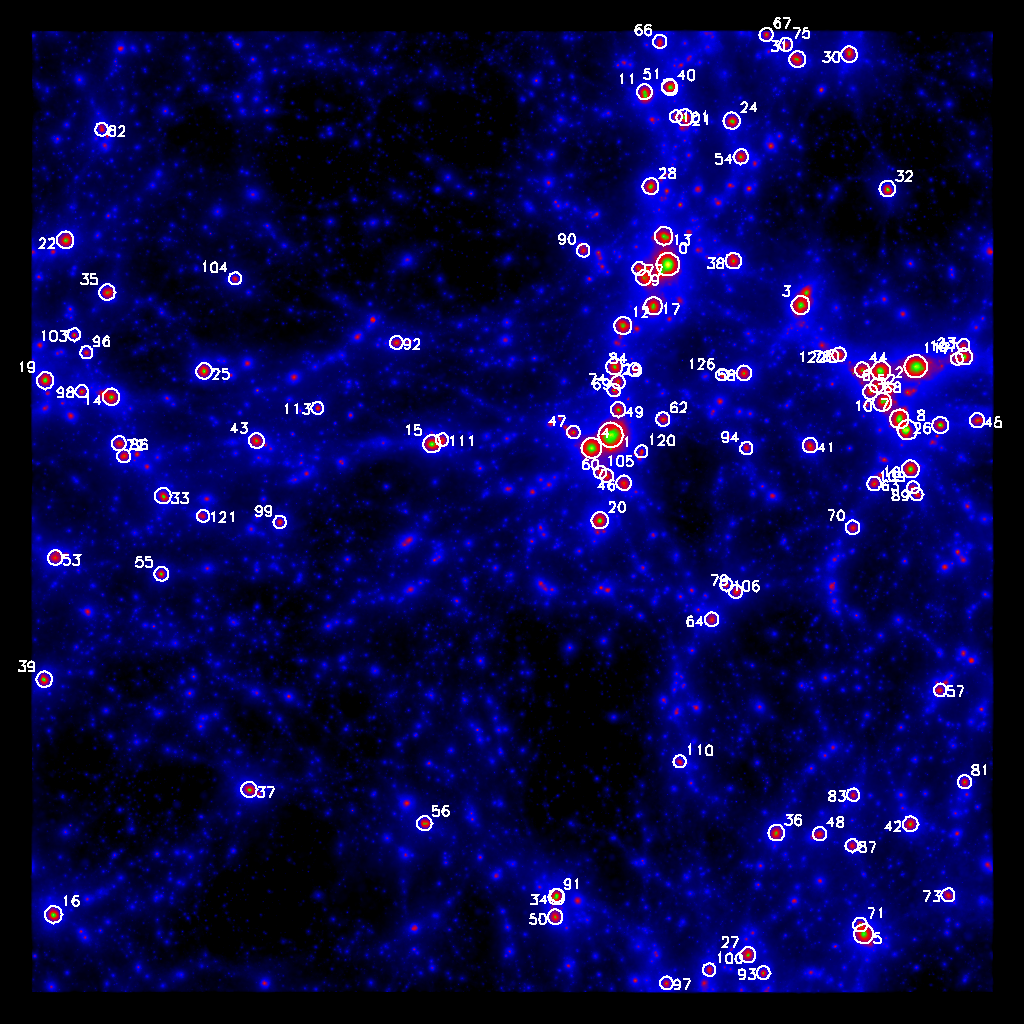Abstract
PHOX is a virtual X-ray observatory designed to obtain synthetic
observations from hydro-numerical simulations. It is split into 3,
independent units.
Unit 1
The first unit is the most general, in which the emission associated
to the gaseous component from the hydrodynamical simulation is
calculated, based on a theoretical emission model.
The spectral model assumed can be very
complicated and account for more realistic descriptions of the emitting
gas which are included in up-to-date sophisticated hydro-simulations,
such as metallicity, chemical composition and sub-grid turbulent broadening
of the emission lines. This first unit has to be executed independently
from the others just once per simulation output. The emission of
each gas volume is associated with a photon package.
Unit 2
The second unit of the code takes into account the geometry of the
forseen observation, the observing time as well as the idealized
area of the instrument to be used. Here the projection along a given
line of sight is applied and photon energies are corrected for the
Doppler Shift.
Unit 3
In the third unit, the detailed instrument properties are taken into
account.
Here the convolution with the instrument response matrices is done. This
unit can be conveniently replaced by any desired X-ray instrument
simulator, like the sophisticated tool XISSIM, which has been
developed especially to obtain synthetic observations of the
Suzaku X-ray Imaging Spectrometer.
Authors
This software package is developed by Veronica Biffi in
collaboration with Klaus Dolag, Hans Boehringer and
Gerard Lemson.
A description of the code can be found in Biffi et al. 2012,
(MNRAS 420, 3545) and Biffi et al. 2013, ( MNRAS 284, 1395).
Code distribution
To obtain the source code of PHOX and the installation
instructions, please send a mail to Veronica Biffi
(biffi@sissa.it).
Functionality for Web-Interface using Galformod
This prototype implementation allows you to apply PHOX to one
snapshot (z=0.07) of the Magneticum Pathfinder simulations
set (Dolag et al, in preparation). The result of unit 2 is returned as a fits
file and contains the list of photons selected, assuming a desired exposure time
and a nominal collecting area of the chosen instrument. You can select clusters
from the list or enter any position within the box which has a side length of
128 Mpc/h. More detailed informations on the actual simulation used can be found
in Hirschmann et al. 2013.

Via this service you will actually run unit 2 on our server on a pre-processed output of unit 1.
Therefore, if you do not have a Galformod account yet, please send your name and your institution to Gerard
Lemson (lemson@mpa-garching.mpg.de) to obtain access to the Galformod portal.
A prototype
of the web interface is already available.
Contact
Contact Veronica Biffi (biffi@sissa.it) in case of questions.

